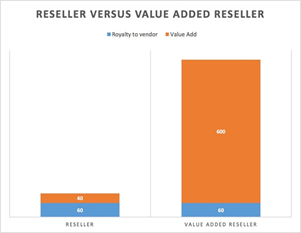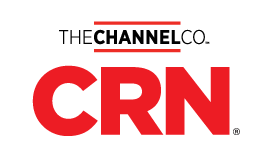
We will illustrate the concept of channel as an integrated element of your product offering and value proposition through a short case study.
Microsoft Dynamics AX and NAV are products in the Microsoft portfolio that were part of the 2002 acquisition of the Danish software company Navision. When Navision released their first product in 1984, they decided to serve the market exclusively through resellers. Over the years they noticed that adding an option for the resellers to make changes to the product had a much larger impact on sales than adding a functional feature to the basic software product.
This observation led to the release of two products, Navigator/AL (Application Language) in 1990 and Concorde XAL (eXtended Application Language) in 1991. Both products enabled reseller partners to develop additional functionality on top of the standard features provided.
Although this made the products more complicated and the learning curve for new partners steeper, it allowed the partners to add extensions and services for which they should pay no license fee to Navision.
The channel partner value proposition
Navigator/AL and Concorde XAL enabled the partner to increase the value they could offer to the marketplace. Instead of just reselling a standard software product, the reseller could offer customization, extend the functionality, offer professional implementation services and charge customers for ongoing support.
Today it is not unusual that a customer solution based on a Microsoft Dynamics product has a 90% value add.
The extension allowed the partners to differentiate from other resellers and develop vertical solutions making them more attractive to customers. Customized solutions create a much tighter relationship between the reseller and customers making it more difficult for the customers to switch to another partner.
With the opportunities for extending the functionality many partners started to develop new modules and offer them to other partners.
The customer value proposition
Navision motivated their partners to adopt a vertical market approach. By making the partners focus on different market segments they could expand the channel with much less risk of over-penetration.
Partners that invested in vertical solutions were supported by joint programs where Navision co-sponsored marketing and sales activities. In tradeshows more than 50% of the exhibition “real estate” was reserved for partners displaying their solutions to potential customers.
Navision also stressed that customers had a choice of implementation partners minimizing the “lock-in” that most customers dislike. Customers decided to use NAV or XAL first and then scanned the market for the right implementation partner.
With the AL and XAL frameworks the partners became an integrated part of Navision’s value proposition to the customers, as well as to new potential partners. Navision had invented an ecosystem with much more scalability potential than they could ever have mustered should they had decided to develop all the functionality themselves.
Reccomendations
If you want to take the indirect channel route to the market you should consider how you can enable your partners to create value on top of your product.
By allowing resellers to make changes to your product, you can:
- Drastically increase reseller revenue and profit opportunity
- Grow the channel faster and wider without suffering from over-penetration
- Increase the switching cost for resellers as well as for customers
- Release eco-system dynamics enabling the channel to pull you towards market leadership
If you succeed in motivating the partners to take the baton, then you have paved the road to success.
Note: Navision was based on the merger of Navision Software and Damgaard in 2000. Damgaard released Concorde XAL (eXtended Application Language) in 1991 and AXAPTA in 1998. Both products achieved massive international success.
Hans Peter Bech is an Amazon bestselling author, keynote speaker, economist and advisor. He blogs on issues related to growing software driven companies to global market leadership and write books and whitepapers on business development in the software industry.
LinkedIn: http://www.linkedin.com/in/hanspeterbech

